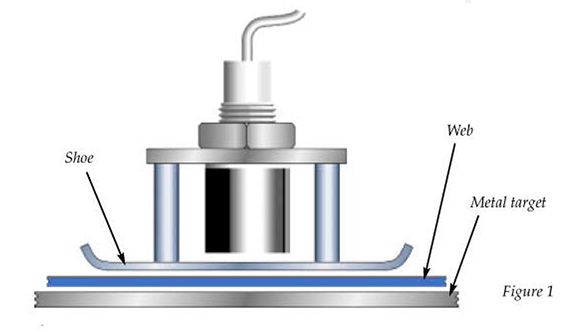|
Web Thickness Measurement |
|
| GOAL Regulating the thickness of a nonconductive fiber web across its width and length (rubber, paper, dough, plastic, particle board, etc.)Maintaining a precise material thickness (±0.001 inch). Making measurements in the presence of environmental contaminants. SOLUTIONS Web thickness is controlled by the position of two calendar rollers. Kaman’s single-channel sensor is mounted on a shoe that slides across the web as it exits the rollers (see Figure 1). The sensor looks through the nonconductive web to measure the distance to a metal backing. Kaman’s systems provide a DC analog signal directly proportional to the web thickness. Result: Improved web quality and reduced process costs
THE KAMAN ADVANTAGE Non-contact. Using eddy current technology, the sensor can measure position without ever touching the target. The result is an extremely reliable system with no moving parts. On-line. The sensor measures the web thickness as the material exits the rollers. A set point can be triggered to warn when out-of-tolerance conditions are reached. Rugged. Kaman’s system components — the sensors and a NEMA-12 box used to house the signal conditioning electronics — are unaffected by environmental contaminants. Versatile. The KDM-8200/8206 non-contact measurement is equally effective for particle board and plastics. Accurate. The system passively compensates for the temperature shifts of the process environment. Every application is unique. |
|

